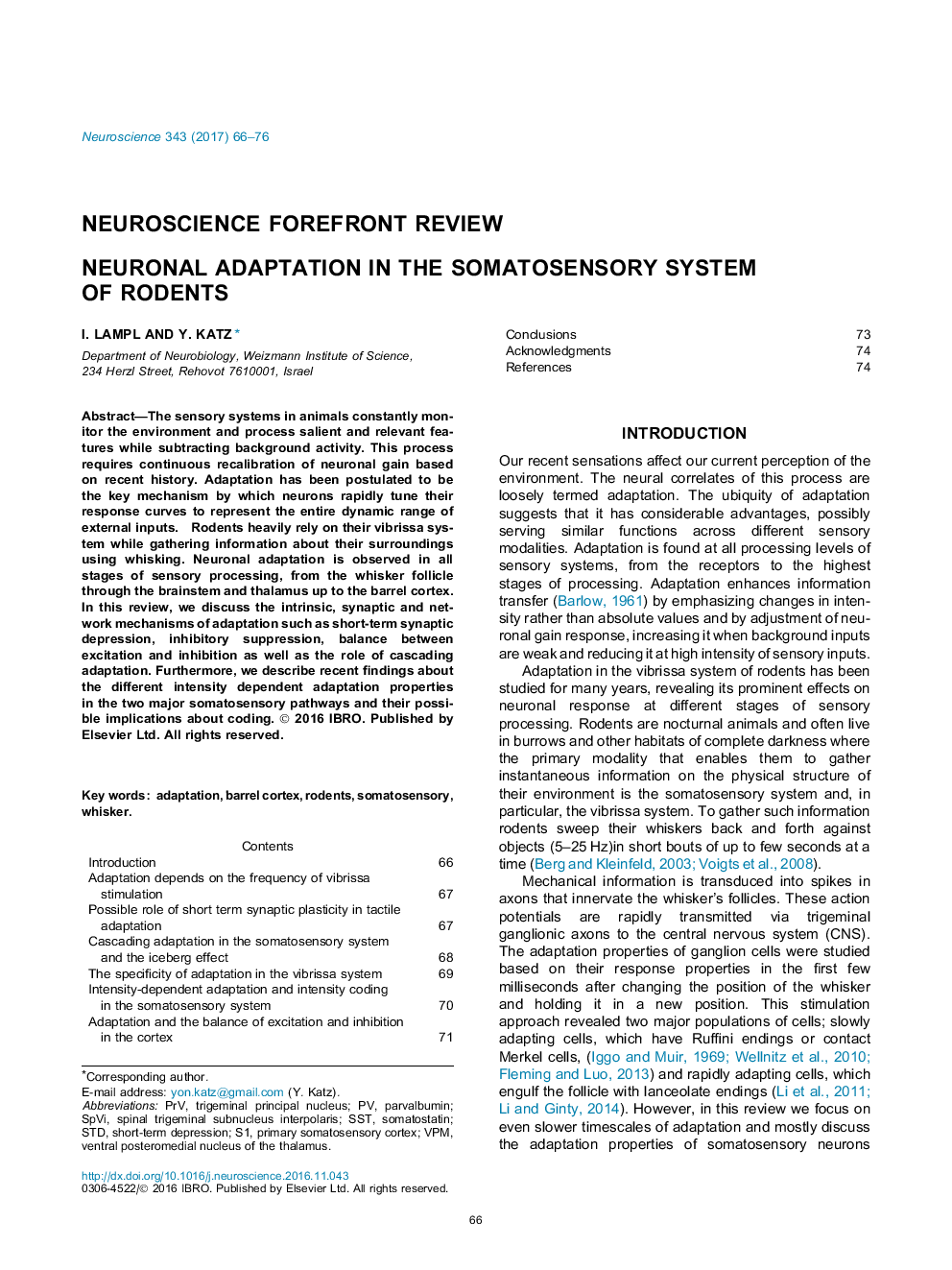| Article ID | Journal | Published Year | Pages | File Type |
|---|---|---|---|---|
| 5737850 | Neuroscience | 2017 | 11 Pages |
â¢All neuronal relays show adaptation in response to repetitive whisker deflection.â¢Inhibition and synaptic depression shape somatosensory adaptation.â¢Distinct adaptation patterns in different pathways can improve encoding.â¢Cortical response is subjected to cascading adaptation.
The sensory systems in animals constantly monitor the environment and process salient and relevant features while subtracting background activity. This process requires continuous recalibration of neuronal gain based on recent history. Adaptation has been postulated to be the key mechanism by which neurons rapidly tune their response curves to represent the entire dynamic range of external inputs.Rodents heavily rely on their vibrissa system while gathering information about their surroundings using whisking. Neuronal adaptation is observed in all stages of sensory processing, from the whisker follicle through the brainstem and thalamus up to the barrel cortex. In this review, we discuss the intrinsic, synaptic and network mechanisms of adaptation such as short-term synaptic depression, inhibitory suppression, balance between excitation and inhibition as well as the role of cascading adaptation. Furthermore, we describe recent findings about the different intensity dependent adaptation properties in the two major somatosensory pathways and their possible implications about coding.
